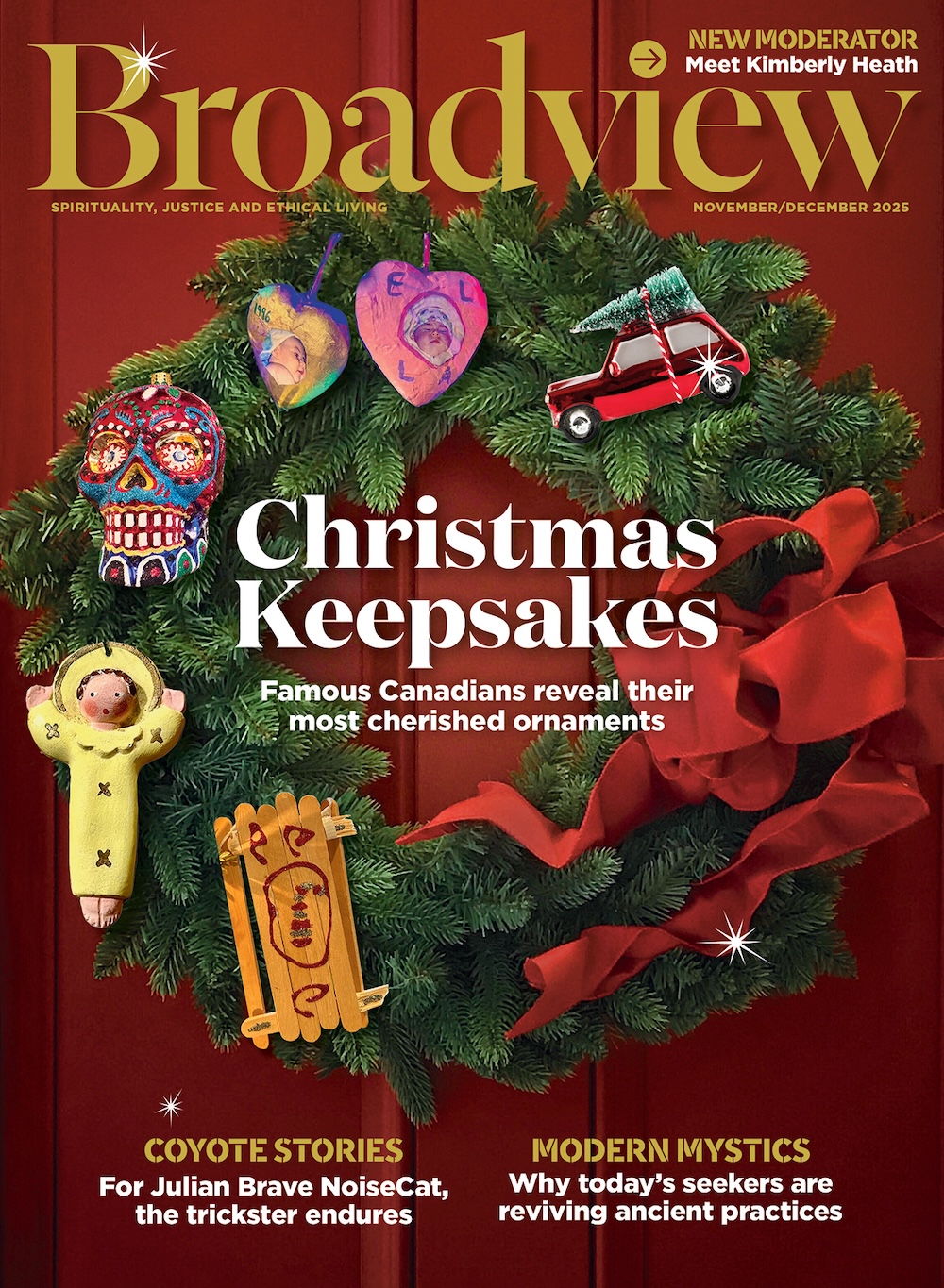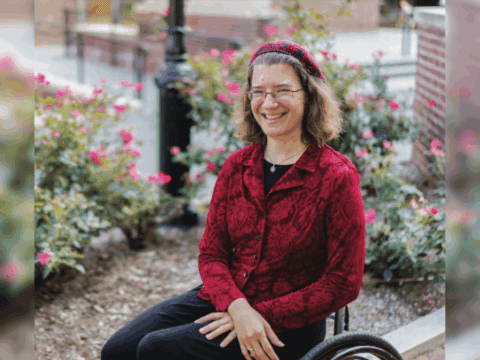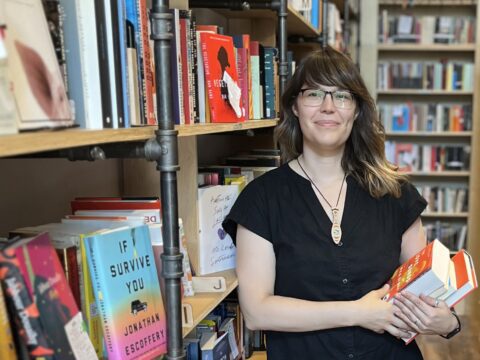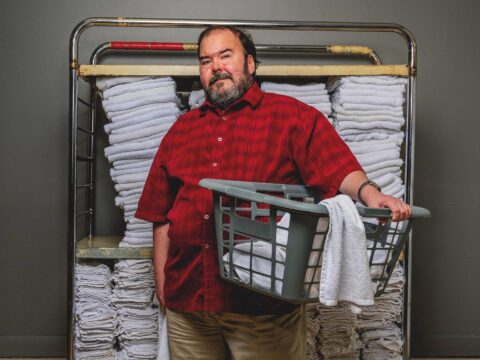Open to me the gates of righteousness,
that I may enter through them and give thanks to the LORD.
This is the gate of the LORD;
the righteous shall enter through it.
I thank you that you have answered me
and have become my salvation.
The stone that the builders rejected
has become the chief cornerstone.
This is the Lord’s doing;
it is marvellous in our eyes.
This is the day that the LORD has made;
let us rejoice and be glad in it.
Psalm 118:19-24
You may unsubscribe from any of our newsletters at any time.
***
He is risen! He is risen, indeed! Christ died, was risen and will come again — this is the mystery of our faith that we proclaim every time we come together at table to celebrate communion. It is the hope that sustains us. A belief that the death — dealing powers of the world are no match for God incarnate, come to us in our teacher, comforter, sustainer, sibling, friend, salvation.
This year’s lectionary readings for Easter include the usual suspects: the women encountering the empty tomb and disciples experiencing and then sharing the news of Christ’s resurrection. It also includes verses from Psalm 118 — a psalm that prophesies salvation and praises God for the overturning of what was expected.
I chose to reflect on this psalm for Easter this year, because I’ve been spending a lot of time thinking about the call and vision of The United Church of Canada — to be a church of deep spirituality, bold discipleship and daring justice. I have been heartened to see that where communities of faith have shifted their focus from problems to Christian formation and discipleship, renewed energy and growth in the church seem to have followed.
Often what happens when an adult engages in committed discipleship and informed faith formation is that their commitment to the church deepens. And the congregation gets excited when this happens. When newcomers become full members, who have either transferred membership, been baptized or made an adult profession of faith, they tend to stick around.
Sometimes, we want the same thing to happen when young people come around. But often it doesn’t, and we are disappointed. It confirms our deepest fears that the next generation doesn’t care about church.
More on Broadview:
But in my experience, most of the time, deep engagement with issues of faith doesn’t happen until young adulthood. We know from science that our brains aren’t fully developed until we are in our mid-20s. And while I benefitted from Explorers and Canadian Girls in Training, it was really youth group and camping ministry that formed my deep and lasting attachment to church. I didn’t feel personally connected to a congregation until I was 25.
We want young people in our churches, but we don’t always prioritize them.
A few years ago, I saw a social media post from a colleague who was trying to find a low-cost youth ministry resource. The resource they wanted cost $400. This was, in their view at the time, not reasonable. I remember my heart sinking a little bit and thinking, “If you can’t commit $400 to youth ministry, the resource isn’t your problem.” I know there are unique circumstances in every community of faith, but even in a congregation of 20 people, you could ask everyone to give an extra $20 over the course of a year.
After I was elected moderator, a university friend who came to church later in her young adult life reached out to say congratulations. She’d recently found a worship home in her local United church. She was also the mother of a toddler. While she found the worship and faith formation life-giving, she felt the community hadn’t thoughtfully considered her child. Like many church buildings, there were accessibility and deferred maintenance issues. No safe space had been dedicated to the supervision of her toddler.
To be clear, many toddlers were part of this community of faith. But they were in a part of the building that was rundown, not always clean and with decades-old toys and resources. Adding to the challenge, the church often relied on a younger teen to supervise multiple toddler-aged children, and it was not clear to my friend that her child was either valued or safe. She was considering leaving the congregation. I suggested that she name her concerns to the ministry team and the board and offer to help improve the church’s standards.
It only takes a few strolls through clergy social media groups to see frustrations — expressed anonymously to respect their congregants — about the tension of trying to be welcoming to young families while older folks treat children in a way that is gruff and sometimes downright offensive.
One area of tension is around activity and movement versus silence and stillness in worship. Colleagues have talked about children being shushed or told to stop moving during services, much to the dismay of those trying to create intergenerational space. It makes me wonder why. I know very few people who actually dislike children.
As moderator, I spend a lot of time in congregations, which means I spend a lot of time with folks in their 60s, 70s, 80s and beyond. As I watch my parents and peers age, and as I talk with folks like Rev. Don Robertson, who has been leading an initiative on generative aging in the church, I have become more attuned to the rites of passage of aging.
One day, it hit me: those asking for silence and stillness may not be taking a stance against children, but instead asking for safety and security for folks whose physical, cognitive and social needs are changing in ways that they can’t control and often don’t like. What if instead of thinking of our elders as grumpy old folks, we realized that running children mean potential tripping hazards, and talking in church can interfere with hearing clearly? What if the desire to have children in the church and feeling challenged by their presence are actually two truths that need to be held in tension with each other?
As I shared in my Broadview Christmas message, there is a difference between saying “all are welcome here” and “this was designed with you in mind.” What would it look like to make the church a place that truly practised intergenerational worship? How would we design the experience of church with both younger and older members in mind?
Thinking back to this year’s Easter psalm, “The stone that the builders rejected has become the chief cornerstone,” I think of children, who are our future, as the chief cornerstone. If we don’t have young people in the church, the church has no future at all. And even when it feels like youth are rejected by the builders of the church, they still must be our chief cornerstone.
What if we created spaces for children where modern standards of care and leadership are applied, where a parent like my university friend will be excited to come to church because she knows her child will be somewhere warm, inviting and safe? And what if we also taught children about the realities of aging bodies? What if those leading worship helped set the tone for what’s desired in a community? That we want a space for the joyful presence of children — and we want our elders to be safe and included? That we don’t run in the sanctuary, that we practise quiet so that others can hear well, and that we move around each other’s bodies with care? What if we curated spaces and ways of being where we are attentive to each other, instead of assuming that the status quo works for all?
According to the United Church Manual, funding children, youth and young adult ministry is part of the mandate for communities of faith and regions. University chaplaincy is a vital means of reaching out to a generation that is desperately looking for a spiritual solution to the ethical and existential problems they will inherit. And yet nearly all our university chaplaincies, if they even exist, are at risk through lack of funding. What does it say to high school students if their community of faith won’t find the money for a $400 resource?
The theme for this year’s General Council is “Visions and Dreams.” My Easter dream for this church is to centre the lives of and the ministry to children, youth and young adults. Just like a building needs a cornerstone, not only do we need them for the future of the church, but we are enriched by their presence now. Their dreams and visions, their passion for justice, their refusal to accept the ways that our systems of power continue to oppress — these are all to the glory of our saving and liberating God. My dream is to be able to say, “This place was designed with you in mind. This is the gate of the Lord and the righteous shall enter. The presence of and ministry to our youth is the Lord’s doing, and it is marvellous in our eyes.”
***
Rt. Rev. Carmen Lansdowne is the 44th moderator of The United Church of Canada.















Way to go, Carmen! Thanks for having the courage to express prophecy in 2025. I’ve been reflecting on the word “welcome” [that most churches want to believe about themselves.]. People seldom realize that their welcome comes with strings attached. Newcomers to churches are welcome as long as they tow the line that has been established. These days, most communities of faith lack children and youth, but can’t get past the difficulty of there being nothing they can do about it. There needs to be a new focus, which inspires energy and enthusiasm. Those who remain active – – regardless of age – – need to be involved in creating the new focus of inclusivity.